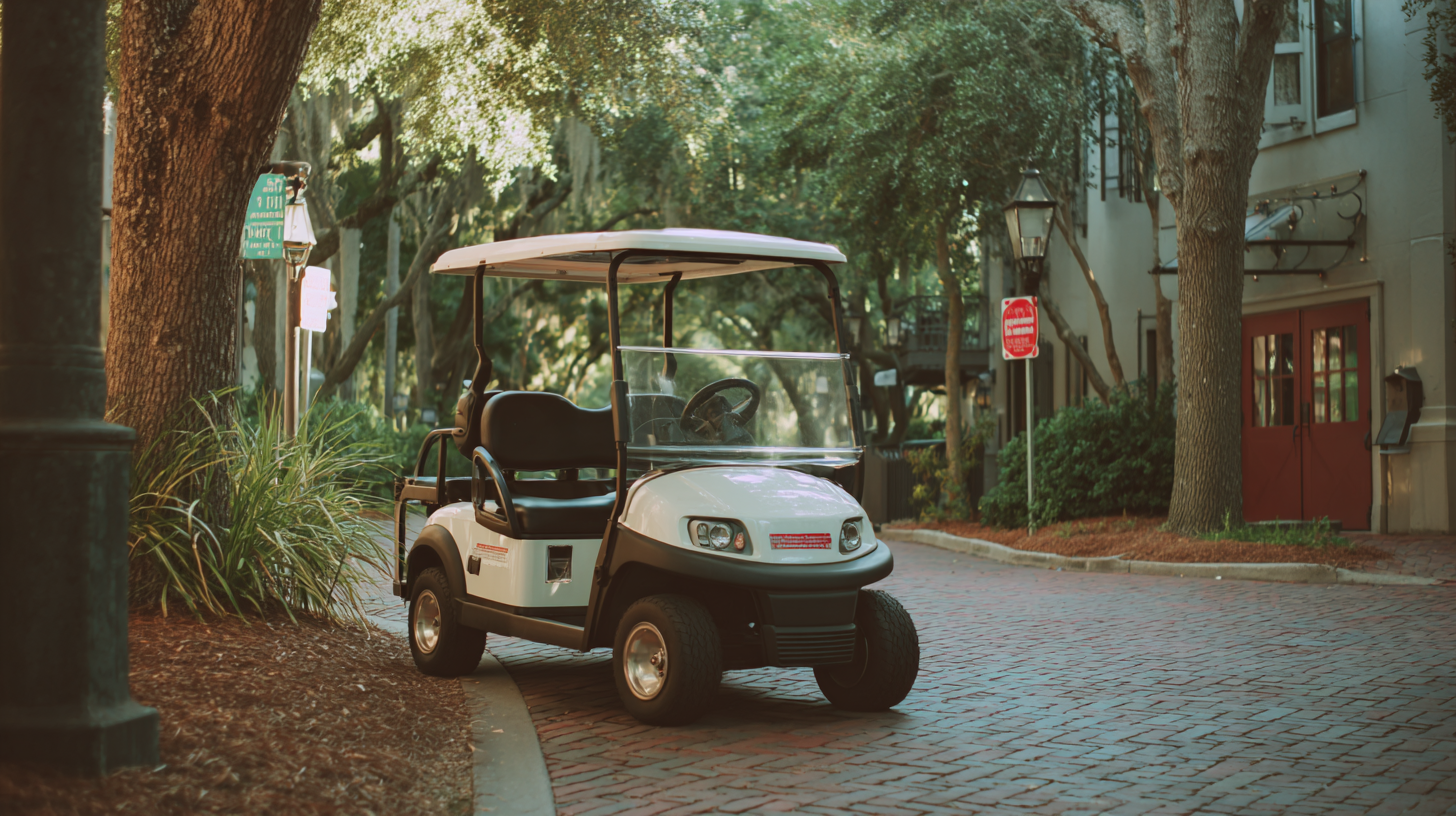The rise of electric golf carts marks a significant evolution in the game of golf, fundamentally changing how players navigate the course while promoting sustainability. As golf courses increasingly embrace environmentally friendly practices, electric golf carts stand out for their ability to enhance accessibility, allowing players of all ages and abilities to fully enjoy the sport. These modern carts not only provide a low-emission alternative to traditional gasoline-powered options but also offer a quieter, smoother ride that minimizes disruption to the natural surroundings. Furthermore, the integration of advanced technologies in electric golf carts, such as GPS navigation and energy-efficient batteries, plays a crucial role in improving both player experience and course management. As we delve deeper into this trend, we will explore the numerous benefits these electric vehicles bring to golf courses, their impact on reducing carbon footprints, and how they are reshaping the future of this beloved sport.

The evolution of golf carts has taken a remarkable turn over the years, transitioning from traditional gas-powered models to innovative electric versions. This shift has been driven not only by advances in technology but also by a growing awareness of environmental sustainability. Electric golf carts are at the forefront of this change, offering a greener alternative that minimizes noise pollution and reduces carbon emissions on the course. As golf courses strive to create a more eco-friendly environment, the adoption of electric carts plays a significant role in achieving this goal.
Tips for choosing the right electric golf cart include assessing battery life and charging options, as these factors greatly influence the user experience. It's essential to consider your specific needs, such as course terrain and distance coverage. Additionally, look for models with energy-efficient features like regenerative braking, which helps extend battery life. Regular maintenance, such as checking tire pressure and keeping electrical connections clean, can also enhance performance and longevity.
As the demand for electric golf carts continues to rise, manufacturers are focusing on innovative designs and improved functionalities. With features like GPS navigation, comfortable seating, and compact sizes for easy maneuvering, these modern carts are tailored to enhance the golfing experience. By embracing these advancements, golf enthusiasts can enjoy a more efficient and environmentally responsible way to navigate their favorite courses.
 Electric golf carts are transforming the game by enhancing accessibility for all golfers, particularly those with disabilities. The introduction of adaptive designs and features in golf carts allows individuals with various physical limitations to navigate the course with ease. This inclusivity reflects a growing recognition of the need for golf to be accessible to everyone, ensuring that adaptive golfers can enjoy the sport without obstacles.
Electric golf carts are transforming the game by enhancing accessibility for all golfers, particularly those with disabilities. The introduction of adaptive designs and features in golf carts allows individuals with various physical limitations to navigate the course with ease. This inclusivity reflects a growing recognition of the need for golf to be accessible to everyone, ensuring that adaptive golfers can enjoy the sport without obstacles.
Moreover, electric golf carts contribute significantly to reducing the carbon footprint of golf courses. By replacing traditional gas-powered carts with electric ones, facilities can minimize harmful emissions while simultaneously offering a quieter and more peaceful golfing experience. The shift not only supports environmental sustainability but also promotes a cleaner and more enjoyable atmosphere on the course, making golf a more welcoming sport for all players, regardless of their needs.
This evolution in golf cart technology is reshaping the landscape of the game, paving the way for broader participation and a commitment to eco-friendly practices in the sport.
The shift towards electric golf carts is not just a trend; it's a transformative movement that significantly reduces the carbon footprint associated with golf courses. According to a report from the National Golf Foundation, traditional gasoline-powered golf carts can emit up to 1.5 tons of carbon dioxide per year per cart. In contrast, electric carts produce zero tailpipe emissions, making them a far more sustainable choice for golf courses aiming to enhance their environmental responsibility.
Moreover, the Environmental Protection Agency (EPA) emphasizes that the adoption of electric vehicles, including golf carts, can contribute to cleaner air and reduced greenhouse gas emissions. By replacing conventional carts with electric options, golf courses can collectively save thousands of tons of carbon emissions annually. A study published in the Journal of Sustainable Golf indicated that golf courses using electric carts saw a reduction of up to 40% in their overall carbon emissions. These figures highlight not only the ecological benefits but also the potential for golf courses to lead the charge in sustainable recreational practices.
The rise of electric golf carts presents a significant shift in the golfing experience, particularly when comparing them to traditional gasoline-powered carts. One primary advantage of electric carts is their reduced environmental impact. They operate quietly and without the emissions that contribute to air pollution and greenhouse gases, making them a more sustainable option for golf courses aiming to lower their carbon footprint. This eco-friendly operation correlates with the increasing awareness among golfers and operators about the importance of environmental responsibility.
Additionally, electric golf carts enhance accessibility on the course. With advancements in battery technology, these carts can cover longer distances and navigate various terrains more easily than their traditional counterparts. This improved performance not only allows players of all skill levels to enjoy the game without physical limitations but also aids in maintaining the pristine condition of the golf course. The shift toward electric golf carts is more than a trend; it's a necessary evolution that addresses the demands of modern golfers and the pressing need for sustainable practices in recreational activities.
| Aspect | Electric Golf Carts | Traditional Golf Carts |
|---|---|---|
| Average Speed (mph) | 15 | 12 |
| Operational Range (miles) | 30 | 25 |
| Carbon Emissions (g CO2/mile) | 0 | 150 |
| Battery Lifetime (years) | 5 | N/A |
| Maintenance Cost (annual) | $300 | $600 |
| Noise Level (dB) | 50 | 80 |
| Accessibility Features | Enhanced | Limited |
The future of golf course transportation is shifting towards sustainability, driven by the increasing adoption of electric golf carts. According to the National Golf Foundation, electric carts account for nearly 70% of all golf carts sold in the past few years, reflecting a significant trend towards greener alternatives. These electric vehicles not only enhance course accessibility for players of all ages but also contribute to reducing the carbon footprint associated with golf. By switching to electric golf carts, courses can reduce greenhouse gas emissions by approximately 50% compared to traditional gas-powered models.

Incorporating sustainable practices into golf course operations extends beyond electric carts. Many facilities are now investing in solar charging stations, which provide a renewable energy source to power their fleets. Reports indicate that courses that implement solar energy solutions can save up to 30% on operational costs over time while promoting eco-friendliness.
Tips: When choosing a golf course, look for those that prioritize sustainability through the use of electric carts and renewable energy sources. Additionally, inquire about their environmental initiatives, like waste reduction and eco-friendly maintenance practices, to ensure a responsible golfing experience. Supporting courses focused on sustainability not only enhances your game but also contributes to a healthier planet.
© 2022-2025 Pelican Lakes Resort & Golf, All rights reserved | Privacy Policy
BROUGHT TO YOU BY THE WATER VALLEY COMPANY